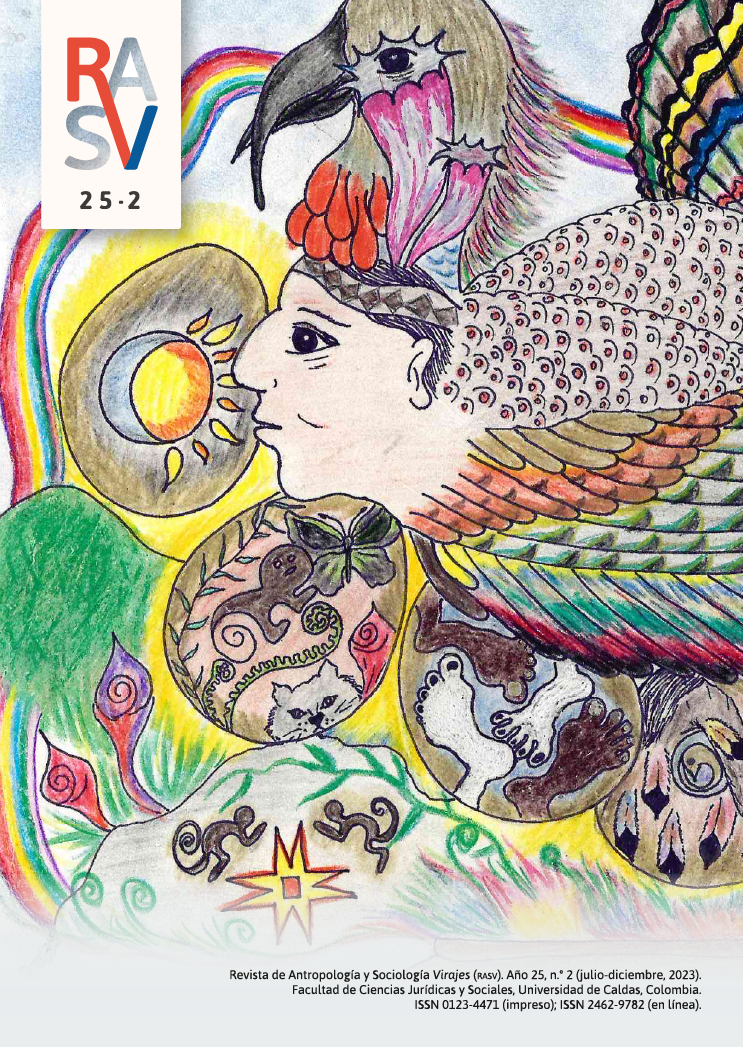Authors
Abstract
The Lima culture developed between 200 and 700 A.D. and is located between the Chanchay and Lurin valleys in Peru. They had several governmental and ceremonial centers including the architectural complex known as Huaca Pucllana, located in Lima, which was built and inhabited between 450 and 700A.D. The construction was constant during the years of activity, generating extensions and modifications in the structures. For this, adobes were used as the main construction unit, which were elaborated by hand in large quantities. For this reason, and in order to study the composition of the adobe units, a group of them was taken to the Soil Mechanics Laboratory at Universidad Nacional Agraria “La Molina”. The units were subjected to three types of analysis: resistance to unconfined compression, granulometry and organic matter content. The purpose of these tests lies in the need to know and understand the proportions of soil particles used in the elaboration of adobes as well as the qualities of blocks obtained throughout the period of use of the huaca. In the experimentation phase, standardized laboratory tests were applied but adapted to this type of adobes, considering them as soil. The results found show a variation of qualities according to the age of each block that could be a parameter to consider when studying the splendor and decadence indicators of the inhabitants of Huaca Pucllana. On the other hand, the results could help in terms of conservation activities and protection of the complex against climatic agents. Finally, it is important to highlight that the research was carried out by a multidisciplinary team formed by archaeologists and an agricultural engineer. Thanks to the exchange of knowledge, experiences and different points of view, a broader panorama of construction in ancient Peru is offered.
References
Aparecida M., Lemos F., Alves O. Aparecida M., Teodoro S. y Aguiar, M. (2020). Construção com Terra: Breve Histórico e Técnicas. Ensaios e Ciencias, 24(4), 357-364. DOI: 10.17921/1415-6938.2020v24n4p357-364
Asamblea General del ICOMOS. (2003). Principios para el análisis, conservación y restauración de las estructuras del patrimonio arquitectónico…
Ceruti, M. C. (2019). Montañas sagradas y pirámides de adobe en la religiosidad de la costa norte de Perú. Facultad de Teología San Pablo; Yachay (Cochabamba); 36(69), 93-109. http://hdl.handle.net/11336/131204
Chirinos, V. 2017. El Museo de Sitio de Huaca Pucllana: una experiencia peruana de reconciliación entre los limeños y su herencia prehispánica. Gaceta de Museos, (66), 42-47. https://revistas.inah.gob.mx/index.php/gacetamuseos/article/view/10651
Cieza de León, P. (1553). La crónica del Perú. …
Costa, C., Cerqueira, Â., Rocha, F. y Velosa, A. (2018). The sustainability of adobe construction: past to future. International Journal of Architectural Heritage. Conservation, Analysis, and Restoration, 13(5), 695-710. DOI: 10.1080/15583058.2018.1459954
Dormohamadi, M. y Rahimnia, R. (2020). Combined effect of compaction and clay content on the mechanical properties of adobe brick. Case Studies in Construction Materials, Volume 13. DOI: 10.1016/j.cscm.2020.e00402
Flores, I. (2005). Huaca Pucllana: esplendor de la cultura Lima. Instituto Nacional de Cultura.
Gama, J., Cruz y Cruz, T., Pi, T., Alcalá, R., Cabadas B., Jasso, C., Díaz, J., Sánchez S., López F. y Vilanova-de Allende, R. (2012). Arquitectura de tierra: el adobe como material de construcción en la época prehispánica. Boletín de la Sociedad Geológica Mexicana, 64(2): 177-188. DOI: 10.18268/BSGM2012v64n2a3
Gandreau, D. y Delboy, L. (CRAterre–ENSAG). (2012). World Heritage, Inventory of earthen architecture. United Nations Educational, Scientific and Cultural Organization (UNESCO).
Ganoza, Y. (2016). Definición de una nueva fase constructiva en Huaca Pucllana. 31: 363-380. DOI: https://doi.org/10. Arqueología y Sociedad, 15381/arqueolsoc.2016n31.e13306
Liberotti, G. y Daneels, A. (2012). Adobes en arquitectura monumental: análisis químicofísicos, arqueología y reconstrucción 3D para determinar las técnicas constructivas en los sitios de La Joya (México) y Arslantepe (Turquía). Boletín de la Sociedad Geológica Mexicana, 64(1),79-89. DOI: http://dx.doi.org/10.18268/BSGM2012v64n1a7
Ministerio de Vivienda, Construcción y Saneamiento. (2010). Manual de construcción / Edificaciones Antisísmicas de adobe 2010.
Morales-Gamarra, R. (2007). Arquitectura prehispánica de tierra: conservación y uso social en las huacas de moche, Perú. Apuntes: Revista de Estudios sobre Patrimonio Cultural, 20(2) 256-277. https://hdl.handle.net/11537/27886
Palacios M., Caldas J. y Vela C. (1992). Geología de los cuadrángulos de Lima, Lurín, Chancay y Chosica hojas: 25-i, 25-j 24-i, 24-j.x. Instituto Geológico Minero y Metalúrgico Lima.
Perú, Ministerio de Vivienda, Construcción y Saneamiento. (03 de abril del 2017). Modifican denominación y contenido de Norma Técnica contenida en el Reglamento Nacional de Edificaciones, como Norma Técnica E.080 “Diseño y Construcción con Tierra Reforzada” y aprueban anexos. ANEXO - RESOLUCIÓN MINISTERIAL N° 121-2017-VIVIENDA Diario Oficial El Peruano n.º 14031. https://cutt.ly/aweq7q03
Piani, T. L., Krabbenborg, D., Weerheijm, J., Koene, L. y Sluijs, L. J. (2018). The mechanical performance of traditional adobe masonry components: An experimental-analytical characterization of soil bricks and mud mortar. Journal of Green Building, 13(3). DOI: 10.3992/1943-4618.13.3.17
Pozzi-Escot, D., Bernuy, K., Torres, H., y Aching, J. (2013, agosto). Sismoresistencia de las construcciones en tierra del Santuario Arqueológico de Pachacamac [ponencia]. 13° SIACOT – Red Proterra, Valparaíso, Chile.
Sillar, B. (2013) The building and rebuilding of walls: Aspirations, commitments and tensions within an Andean community and the archaeological monument they inhabit. Journal of Material Culture, 18(1) 27-51. DOI: 10.1177/1359183512473558
Silveira, D., Varum, H., Costa, A., Martins, T., Pereira, H. y Almeida, J. (2012). Mechanical properties of adobe bricks in ancient constructions. Construction and Building Materials, 28(1), 36-44. DOI: 10.1016/j.conbuildmat.2011.08.046
Tsai, H. I. (2012). Adobe Bricks and Labor Organization on the North Coast of Peru. Andean Past, 10(9). http://dx.doi.org/10.3998/lacs.12338892.0002.004
Vargas, J., Gil, S., Jonnard, F. y Montoya, J. (9-13 de noviembre de 2015). Camino prehispánico Pando [Presentación en papel]. 15° Seminario Iberoamericano de Arquitectura y Construcción con Tierra, Cuenca, Ecuador.
Villar P. (1982). Arqueología del departamento de Lima.
Varum, H., Costa, A., Silveira, D., Oliveira, C., Figueiredo, A. (2010, Octubre) Caracterização mecânica e reforço de construções em alvenaria de adobe. [ponencia] – 8º Congresso de Sismologia e Engenharia Sísmica Decivil – Comunicações. Aveiro, Portugal

 PDF (Español)
PDF (Español)
 FLIP
FLIP



















